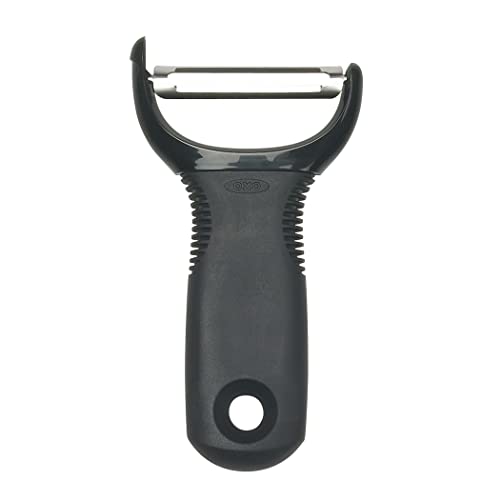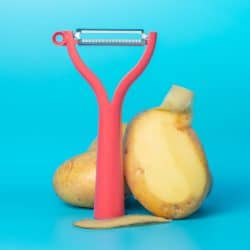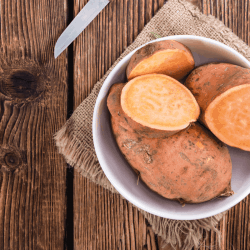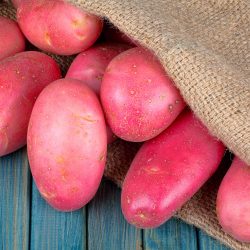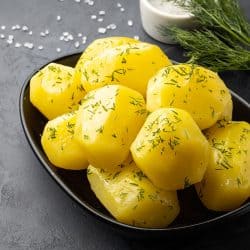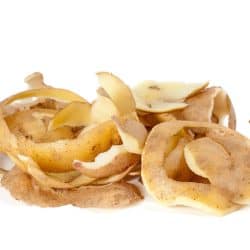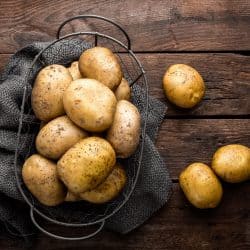From french fries to gratin, making the finest potato-based dishes starts with the very first step: washing and peeling your spuds. But can you peel the potatoes before you wash them? We've done the research, and here's what we dug up on keeping your tubers tidy.
If you are preparing potatoes that don't have too much dirt on the outside, you can peel them first then rinse them in cool water to make the process faster and more efficient. If there is a noticeable coating of dirt on your potatoes, it's best to wash them first to keep your blade sharp and long-lasting.
Continue reading to peel back the curtain on the hows and whys of prepping perfect potatoes. We'll also cover some other common questions when it comes to washed and unwashed potatoes.
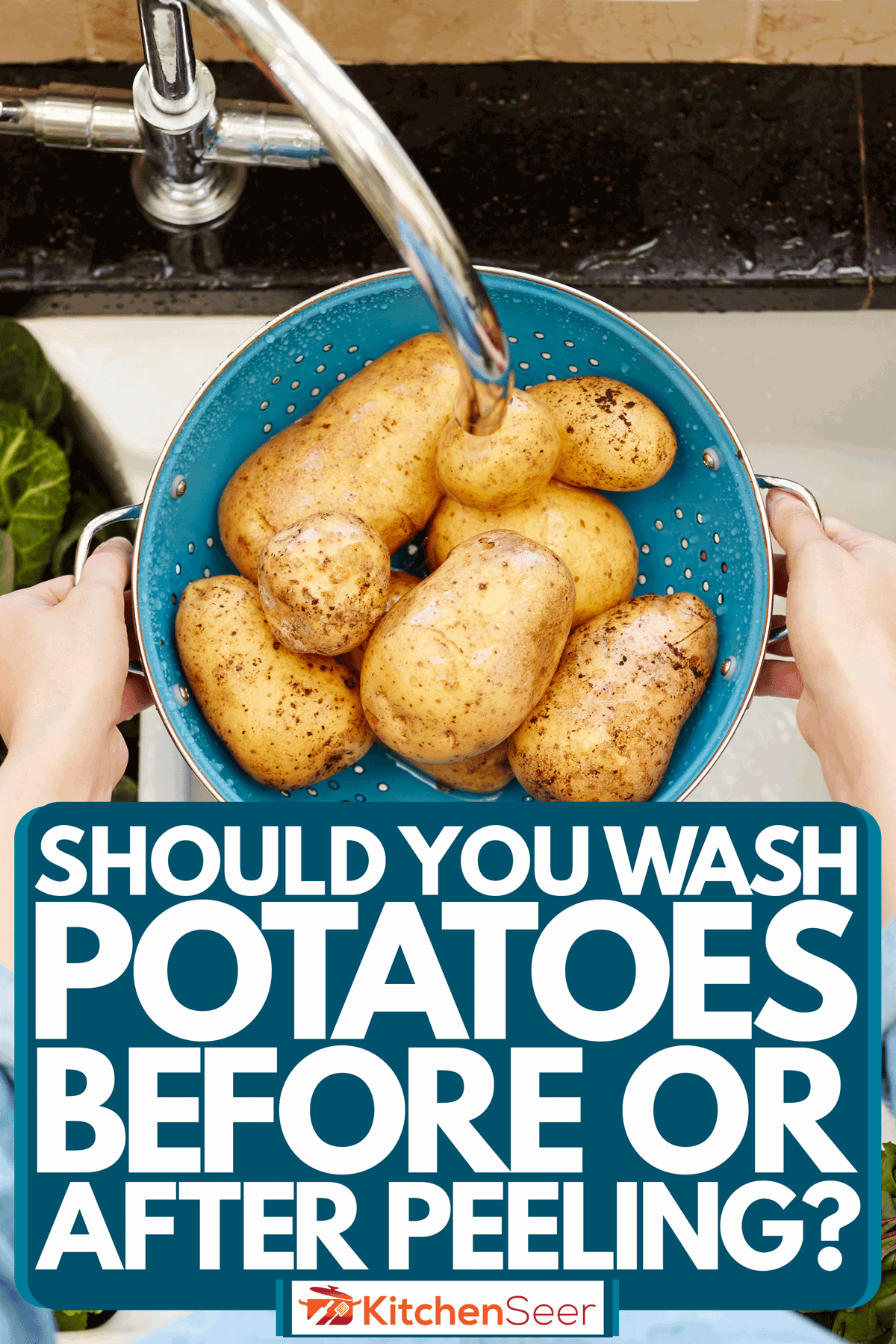
How do you remove dirt from potatoes?
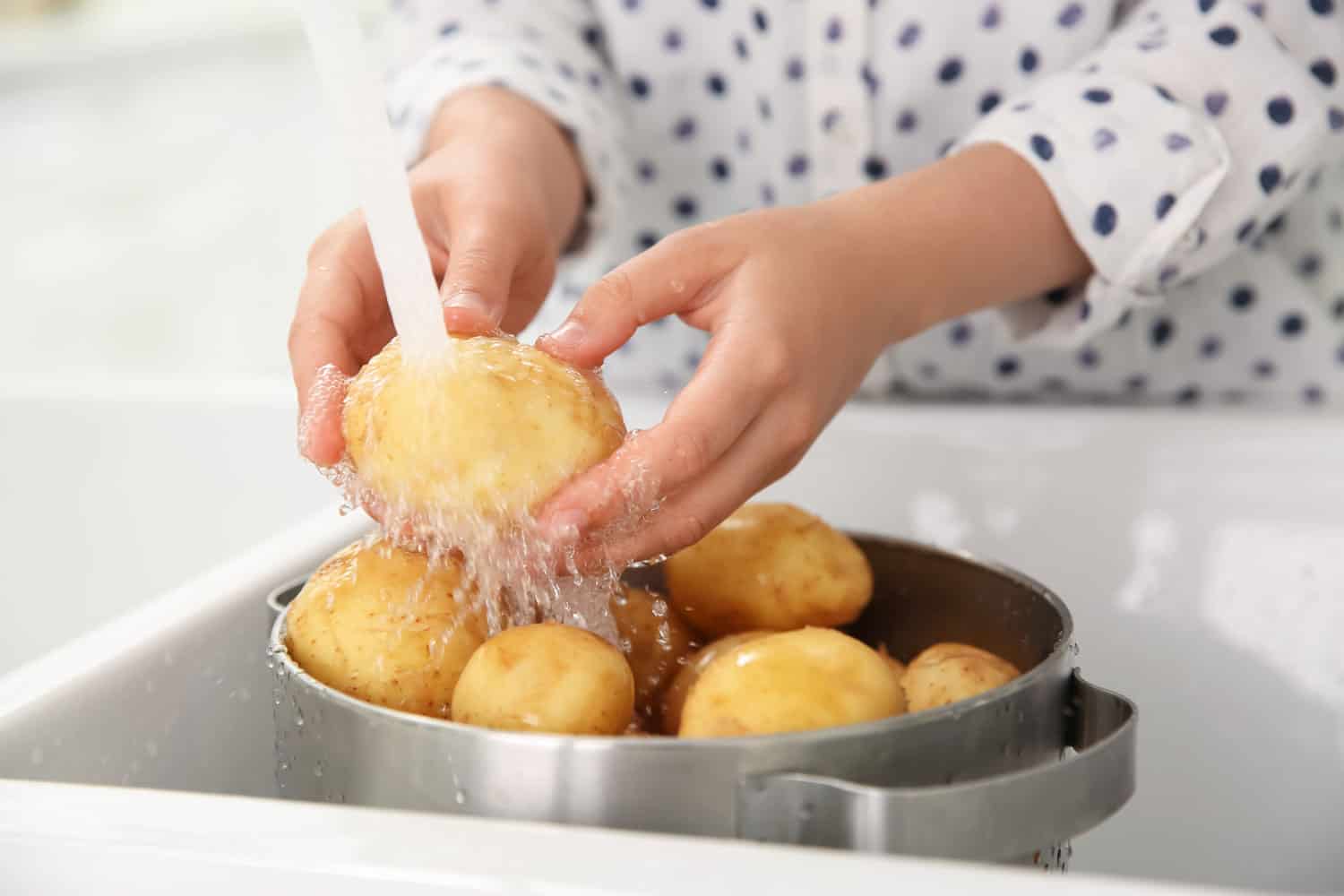
The best way to get your potatoes spotless is in the sink. Start with a clean, empty sink and wash your hands thoroughly. Then, put a colander large enough to fit your potatoes in the sink. You can keep the potatoes there as you clean them.
This colander set comes with one designed specifically to use for just this purpose, with telescoping handles to fit almost any sink.
Click here to see the set on Amazon.
If there is a large amount of dirt on your potatoes or prefer to wash them before peeling them, you can put them in the colander and run some cold water. Scrub them with a brush, like this one with an ergonomic handle from OXO, while holding them under the water.
Click here to see this vegetable brush on Amazon.
You'll notice, even on potatoes that seemed clean, the color of the skin start to lighten. Once the color has become lighter all over and there is no visible dirt in the eyes, they are clean. Some spots may still be darker than others, but this is normal. You can put the clean ones back in the colander as you wash the others.
The Peel First Method
If you will use peeled potatoes for your recipe and there isn't too much dirt on the outside of your potatoes, you can speed up the process by peeling first. Following the same steps as before, but instead of washing and scrubbing them, peel the potatoes under running water and wash the dirt off the flesh below the peel as you go. This can save you a little time, especially when you need a large number of peeled potatoes.
Keep in mind, once potatoes are peeled, they will start to brown in mere minutes. You can keep them submerged in cold water after peeling them to slow this process down. If you plan on boiling them, put some cold water in the pot and add the potatoes there once they are peeled and clean. Acidity can further slow down the oxidation, so adding a small amount of vinegar or lemon juice will keep your taters their same color.
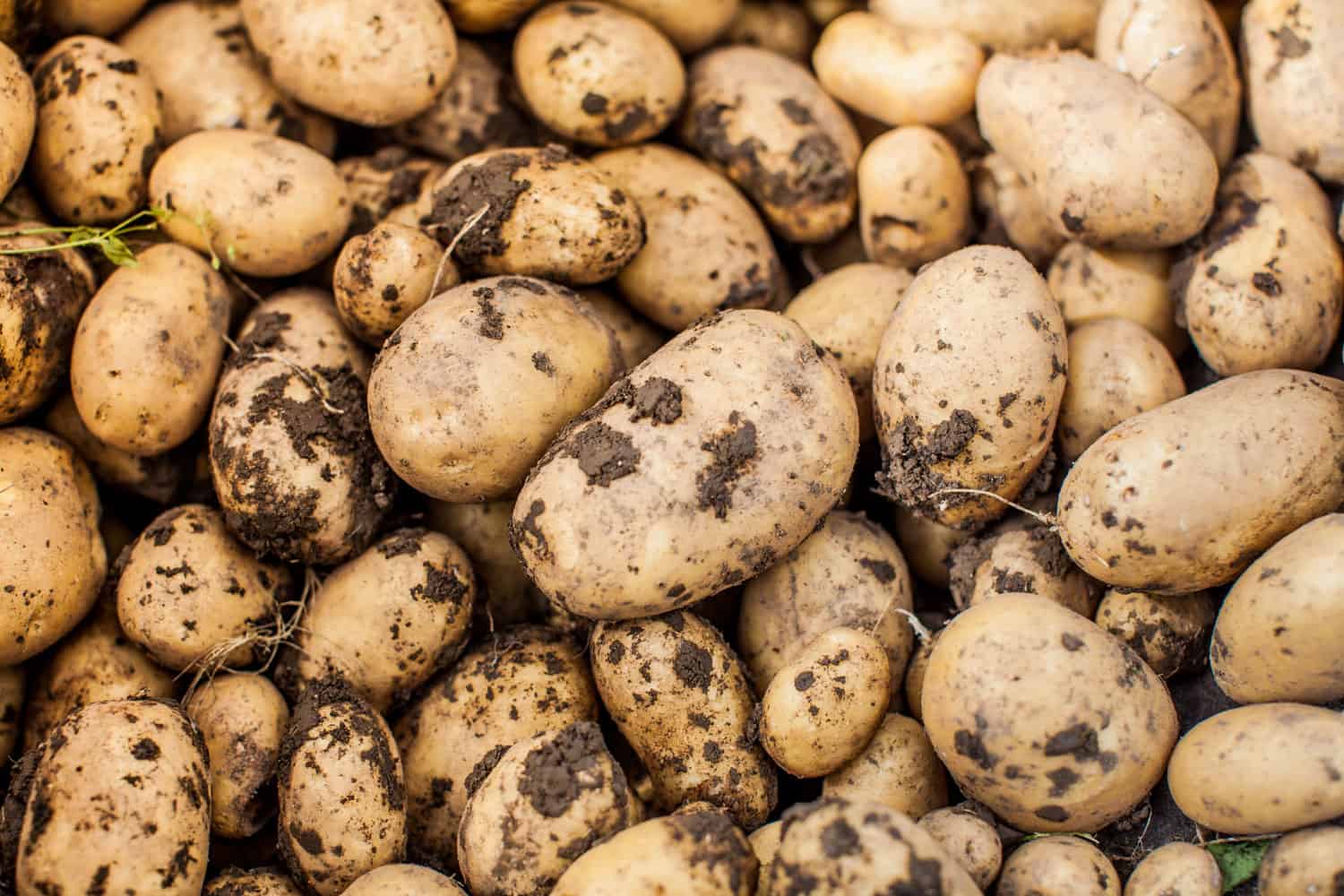
Is it okay to eat unwashed potatoes?
Not so long ago, the vast majority of potatoes were sold with a hefty coating of dirt still on them. These days, it's common to see potatoes that look ready to cook as-is at the supermarket. While it may be tempting to skip the washing step, keep in mind that some amount of dirt, pesticide residue, and other contaminants that can be picked up in shipping and storage are likely to be still present.
So, while it might not always technically be necessary to wash your potatoes, doing so will increase the quality and flavor of your tubers. Washing only takes a few seconds per potato, and nobody likes finding grit in their dinner.
How long do washed potatoes last?
In general, it's best to use washed potatoes right away, as washing reduces the shelf-life of potatoes. If you realize that you washed more potatoes than you need for your favorite recipe, it's not the end of the world. Make sure you dry the potatoes thoroughly, either with a clean kitchen rag or a paper towel, and they should keep in the pantry for up to another week.
Always err on the side of caution when checking your potatoes. Potatoes should be firm to the touch and have an earthy smell. If they are soft or moldy-smelling, you should dispose of them promptly.
If your potato has started to sprout but seems otherwise safe, you can remove and dispose of the sprouts and use the potato normally. Be careful, though. Once potatoes have started to sprout, they go bad quickly, so be extra vigilant with them.
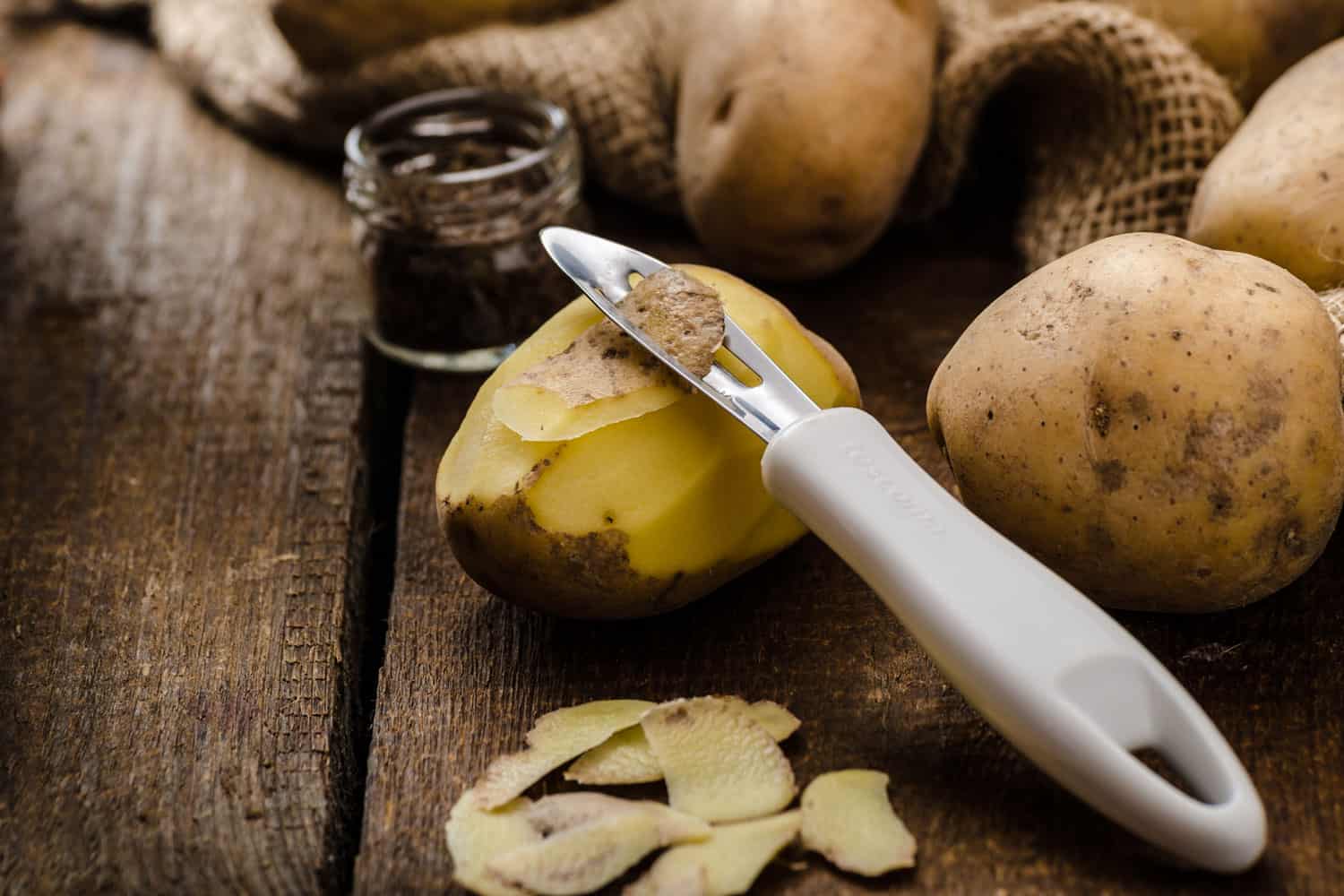
Does peeling potatoes remove pesticides?
Whichever order you peel and wash your potatoes in, you'll be removing more than just dirt and peels. Many people believe that since the part of the potato that makes it to market is grown underground, it will be free from pesticides. However, the USDA identified over 40 different pesticides on at least some potatoes in 2016, the most recent data available at the time of publication.
The most common of these is chlorpropham, an herbicide used to extend potatoes' shelf-life and prevent sprouting, which was banned in the EU in 2019. Research shows that both washing and peeling reduce amounts of residual chlorpropham, with peeling removing over 90% of the residue.
While this might have you rushing to peel your potatoes for all preparations, keep in mind that potato peels contain many valuable nutrients. Furthermore, while many pesticide residues like chloropropham may be present on potatoes, research has shown them to be present in only small quantities, well below dangerous levels.
What is the best way to peel potatoes?
While it is certainly possible to peel potatoes with a paring knife, doing so efficiently takes a lot of technique and practice. That's why, these days, even most professional chefs use vegetable peelers.
The vast majority of vegetable peelers come in two basic designs: swivel peelers with blades that run along the same axis as the handle and y-peelers with perpendicular blades. For both styles, you want a peeler with a comfortable handle and good grip, a sturdy and sharp blade that won't pop out of place during use (a huge pet-peeve), and something long-lasting to get you the best return on your investment.
What are the best swivel peelers?
This peeler from KitchenAid has a sharp, serrated blade that can peel through just about anything. The handle is extremely comfortable and maintains a good grip, essential when peeling huge spuds for Thanksgiving mashed potatoes.
Click here to see the KitchenAid Euro Peeler on Amazon.
This model by OXO gets praise for sharpness, comfort, and ease-of-use, and it's a great value too.
Click here to see the OXO peeler on Amazon.
What are the best y-peelers?
If you've ever spent any time in a professional kitchen, these are probably the kinds of peelers you've seen. And for good reason. Their aesthetic may be utilitarian, but so is their design. Sturdy, sharp, long-lasting, and comfortable to use, they check all the boxes, and this one by Honsen is high quality and of great value.
Click here to see this Swiss peeler on Amazon.
Here is another peeler from OXO, this one in the y-peeler style. It has all the qualities of their swivel peeler, but with a perpendicular blade that is more secure in the handle, and some find it easier to use.
Click here to see this OXO y-peeler on Amazon.
Other styles
Electric, hands-free peelers may seem like a novelty, and, for many kitchens, they are. They are fun to use and show off, but they do have practical functions as well. They free up your hands so you can take on other tasks while peeling your fruit and vegetables. Perhaps most importantly, they open the gates for people who may have hand-dexterity or other issues that prevent them from using more conventional peelers.
This one, by Starfrit, can run on battery power and also features a 6V adapter. It can be used for peeling, as well as making edible ribbons. You can keep a paper towel underneath the peeler to make clean up a breeze too!
Click here to see this electric peeler on Amazon.
Now that your potatoes are peeled and clean, they are ready to use in many sumptuous dishes. One of the most convenient ways to further prep your spuds is with a food processor, so check out our informative guide on how to use one to cut your potatoes to perfection.
No food processor? No worries! We have a guide to get the most out of your other kitchen tools too. Whether you are making a comforting, velvety mash or a rich dauphinoise, you will start on a solid foundation.
In Closing
After reading this article, you should be well versed in the arena of potato washing. Keep an eye on the taters and make sure they haven't passed their expiration before adding them to your favorite recipe. And most importantly, enjoy your potato dish!






